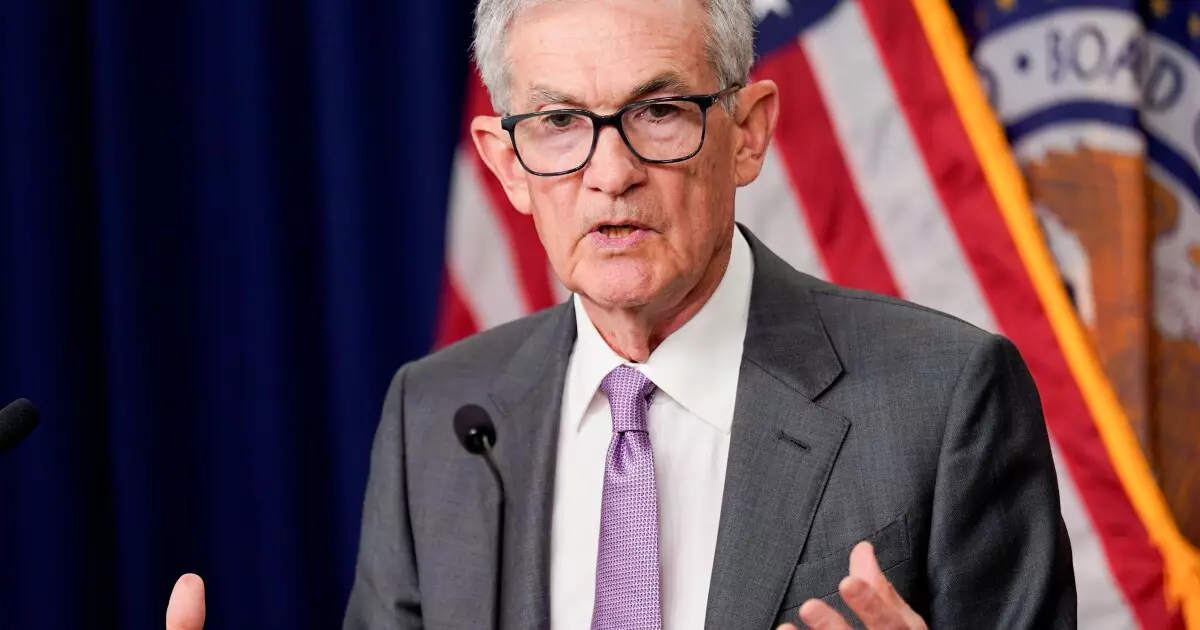The Interplay of Savings, Inflation, and Unemployment: Insights from the Federal Reserve

The economic landscape is perpetually changing, influencing how policymakers approach monetary strategies to foster stability and growth. While inflation and unemployment have traditionally been the focal points for the Federal Reserve in crafting monetary policy, recent comments by Fed Chair Jerome Powell have highlighted an additional metric gaining traction: personal savings. This article delves into the significance of savings rates, gross domestic income (GDI), and how these elements intertwine with the broader economic indicators to shape the Federal Reserve’s decisions.
Personal savings serve as a critical indicator of economic wellbeing. When savings rates are high, consumers are generally perceived to be more financially secure, suggesting that they can withstand economic fluctuations. Recently, Powell underscored the relationship between GDI and gross domestic product (GDP), drawing attention to how shifts in these measurements can impact the economy’s vibrancy. The revision of GDI figures resulted in a notable increase in the savings rate, elevating it from 4.8% to 5.2%. Such an adjustment indicates an upward trend in financial security among consumers.
The correlation between GDI and GDP is fundamental to comprehending the economic landscape. Powell reassured stakeholders that the absence of a gap between these two measures diminishes downside risk. In essence, if individuals possess higher savings, their capacity to spend—crucial for stimulating demand—increases correspondingly, setting the stage for sustained economic growth. This relationship is essential for policymakers who are mindful of the spending behaviors of consumers as they make decisions regarding interest rates and other economic levers.
Inflation continues to pose challenges for economic stability, and the Fed’s response has been critical in managing these challenges. Following a period of significant inflationary pressure, the Federal Open Market Committee (FOMC) made a landmark decision to lower the benchmark interest rate by half a percentage point earlier this month—the first cut since 2020. This move signals a shift in the Fed’s approach, aimed at recalibrating monetary policy in light of improving market conditions and labor market softness.
However, Powell was quick to emphasize that this interest rate cut should not be misconstrued as an admission of economic weakness. Instead, it reflects a calculated confidence in the ability to maintain labor market strength amidst moderate economic growth. The Fed finds itself in a delicate balancing act, where lowering rates could foster spending and investment, yet must also remain vigilant to ensure that inflation rates do not spiral out of control.
Powell’s outlook and the trajectory for future interest rates will hinge on forthcoming economic data, including reports on consumer prices and labor market conditions. These indicators will guide the FOMC’s strategy in the remaining meetings for the year. Importantly, Powell noted that while there are anticipations for further rate cuts, there is no predetermined path—a prudent acknowledgment of the inherent uncertainties in economic forecasting.
The Fed’s responsive approach underscores the complexity of economic conditions influenced by multiple factors, including saving behavior, inflation expectations, and global economic trends. The ability to adapt to these evolving dynamics is essential for fostering an environment conducive to growth while mitigating risk factors associated with economic downturns.
The intersection of inflation, unemployment, personal savings, and GDI paints a complex tapestry of the current economic landscape. As the Federal Reserve navigates these multifaceted relationships, it is imperative to consider how each metric informs the other. The recent increase in personal savings highlights the delicate optimism present in the economy, yet the Fed remains conscious of the volatility that can accompany rising inflation. Thus, a nuanced understanding of these indicators will guide the path forward, ensuring that policymakers make informed decisions to promote sustainable economic health. The road ahead will require adaptive strategies that acknowledge both risks and opportunities, positioning the economy for resilience in the face of uncertainties.





